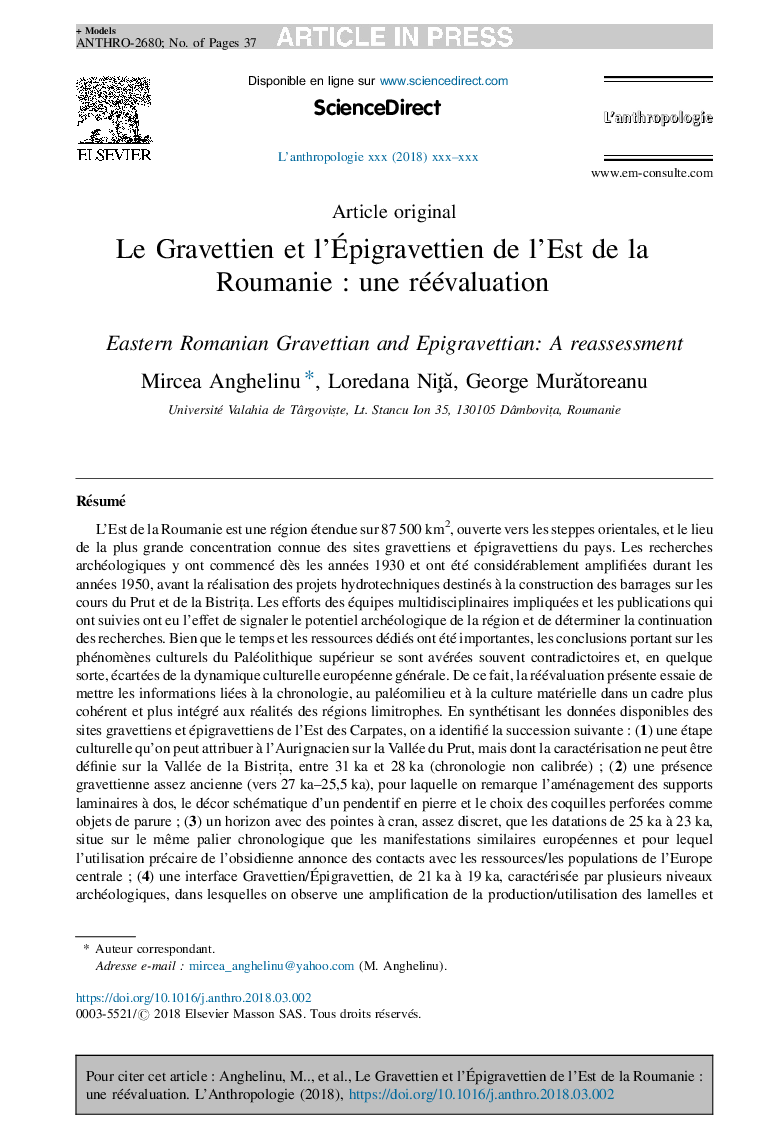| Article ID | Journal | Published Year | Pages | File Type |
|---|---|---|---|---|
| 7439885 | L'Anthropologie | 2018 | 37 Pages |
Abstract
Opening towards the eastern steppe landmass, the Eastern Romania area covers 87,500Â km2, and shelters the biggest number of Gravettian and Epigravettian sites currently known. Archaeological researches in the area expanded in the 1950's, during the construction of dams on the Prut and BistriÈa valleys. The efforts of the multidisciplinary teams involved and the subsequently published papers highlighted the archaeological potential of the region and, with some inevitable interruptions, investigations continued to this day. Although the time and resources spent were not modest, the outcomes regarding the Upper Palaeolithic cultural sequence often proved contradictory and somehow distant from the general European cultural dynamic. Thus, this reassessment tries to put the chronological, palaeoenvironmental, and empirical data in a more coherent framework. A synthesis of the available Gravettian and Epigravettian data east of the Carpathians reveals the following sequence: (1) an Aurignacian stage on the Prut Valley, paralleled by an indefinite Upper Palaeolithic stage, from sites on the BistriÈa Valley, between 31 and 28Â ka (uncal BP); (2) a quite early Gravettian presence, roughly between 27 and 25.5Â ka, which includes backed laminar blanks, schematic decoration of one pendant, and the use of perforated shells as adornments; (3) a scant shouldered points stage, chronologically close to the European similar phases (25-23Â ka), for which the feeble use of obsidian points toward contacts with Central European resources/populations; (4) a Gravettian/Epigravettian interface, between 21 and 19Â ka, manifested within numerous archaeological layers, mainly through an increase in bladelets and organic artefacts production/use; (5) an Epigravettian stage, between 18 and 16Â ka, largely defined through an upturn in raw material choices, backed implements production, and tool types; (6) one last, roughly 14Â ka old Epigravettian stage, in which the technological choices recalled those of the previous one. Regional variability elements and radiocarbon chronology limitations considered, apparently, the Gravettian and the Epigravettian of Eastern Romania share quite a lot of traits with the corresponding Central and Eastern European technocomplexes.
Related Topics
Social Sciences and Humanities
Arts and Humanities
History
Authors
Mircea Anghelinu, Loredana NiÅ£Ä, George MurÄtoreanu,
